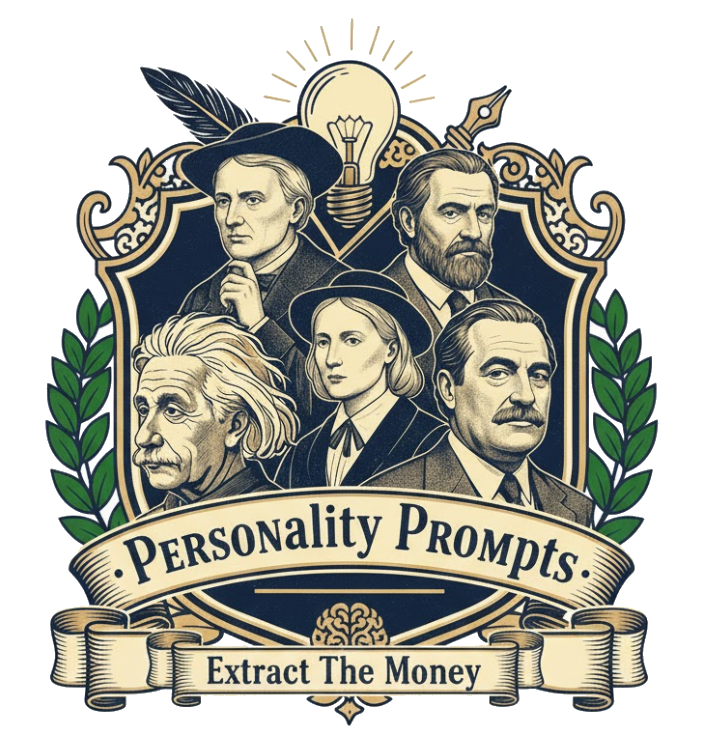Stewart Butterfield didn’t set out to build Slack — he set out to help people understand each other. Where others built productivity tools, he built connection systems disguised as software. To understand Butterfield, you have to think like a philosopher who writes APIs — blending empathy, clarity, and collaboration into code.
1. The Core Archetype: The Empathic Communicator
Butterfield builds software that feels human.
He treats tone, context, and emotion as engineering challenges.
His philosophy can be summarized as:
“Every message is a chance to make work feel more human.”
He turned a failed game company into a communication platform that reshaped modern work.
2. The Big Five Traits: The Engine of Empathic Systems
| Trait | Level | How It Shows Up |
|---|---|---|
| Openness | Very High | Blends philosophy, design, and psychology into user experience. |
| Conscientiousness | High | Thoughtful communicator; designs with intention, not impulse. |
| Extraversion | Medium | Warm presence — listens deeply, speaks precisely. |
| Agreeableness | High | Collaborative and self-aware; prioritizes harmony in culture. |
| Neuroticism | Medium | Sensitive to tone; turns emotional awareness into product empathy. |
He’s the rare founder who codes feelings as features.
3. The Thinking Style: Philosophical, Human-Centered, and Linguistic
🧠 Language as Interface
He sees conversation as design — every notification and emoji is part of a larger grammar of collaboration.
🤝 Empathy as Architecture
He builds systems that reduce miscommunication, not just improve efficiency.
🔄 Philosophy in Practice
His product thinking mirrors his worldview: technology should bring people closer, not just make them faster.
4. The Core Drives: What Keeps Him Relentless
😰 Fear of Disconnection
He fears sterile workplaces and communication breakdowns — where emotion disappears behind automation.
🚀 Motivation for Meaningful Collaboration
He builds tools that foster presence, understanding, and nuance.
🎯 Focus on Emotional Clarity
He treats empathy as a system requirement, not an afterthought.
5. The Legacy: From Chat to Culture
Stewart Butterfield redefined what workplace software could feel like.
He made empathy a design principle — and conversation the operating system of modern teams.
His legacy: proving that technology built for emotion builds stronger companies.
{
"prompt_title": "Stewart Butterfield — Empathic Communicator Persona",
"goal": "Write a deep, human-centered blog post exploring Stewart Butterfield’s philosophy of empathy in technology, communication design, and leadership at Slack.",
"persona": {
"name": "Stewart Butterfield",
"role": "Empathic communicator and systems philosopher",
"thinking_style": ["philosophical","human_centered","linguistic"],
"traits": {
"openness": "very_high",
"conscientiousness": "high",
"extraversion": "medium",
"agreeableness": "high",
"neuroticism": "medium"
},
"drives": {
"fear": "disconnection",
"motivation": "meaningful_collaboration",
"focus": "emotional_clarity"
}
},
"angle": "Butterfield doesn’t just design software — he designs communication. His genius lies in translating emotion, tone, and empathy into scalable systems for work.",
"audience": "Leaders, designers, and technologists interested in communication, collaboration, and emotional intelligence in product design.",
"structure": [
{"id":"hook","task":"Open with Butterfield reflecting on Slack’s accidental birth from a failed game project — and how failure revealed the need for better communication.","target_words":120},
{"id":"core_archetype","heading":"The Empathic Communicator","task":"Describe his worldview: technology as human translator, empathy as design requirement, and clarity as culture.","target_words":180},
{"id":"big_five","heading":"The Engine of Empathic Systems","task":"Map his Big Five traits to Slack’s culture of kindness, communication, and thoughtful iteration.","target_words":220},
{"id":"toolkit","heading":"Butterfield’s Thinking Toolkit","bullets":["Language as design system","Empathy-driven product loops","Feedback as communication training","Philosophical product framing","Tone calibration"],"target_words":240},
{"id":"drives","heading":"Core Drives: Empathy as Infrastructure","task":"Explore his fear of emotional disconnection, motivation for meaningful collaboration, and focus on systems that make teams feel human.","target_words":180},
{"id":"legacy","heading":"From Chat to Culture","task":"Explain how Slack became a case study in emotional technology — software that changes how people relate, not just how they work.","target_words":160},
{"id":"takeaways","heading":"Leader’s Playbook","list":["Build empathy into structure","Design tools that teach tone","Let failure reveal connection","Make communication your core product"],"target_words":160},
{"id":"cta","task":"Invite readers to compare Butterfield vs. Nadella vs. Spiegel — empathy, systems, and emotion as three blueprints for humanizing tech.","target_words":80}
],
"voice_and_style": {
"tone":["thoughtful","empathetic","philosophical"],
"devices":["analogy","reflective tone","linguistic metaphor"],
"avoid":["corporate tone","product hype"]
},
"seo": {
"title":"Stewart Butterfield’s Mindset: Empathy, Systems, and the Future of Communication",
"meta_description":"A deep dive into Stewart Butterfield’s philosophy of empathy-driven technology — how Slack turned communication into culture.",
"target_keywords":["Stewart Butterfield leadership","Slack founder","empathy in design","communication systems"]
}
}
